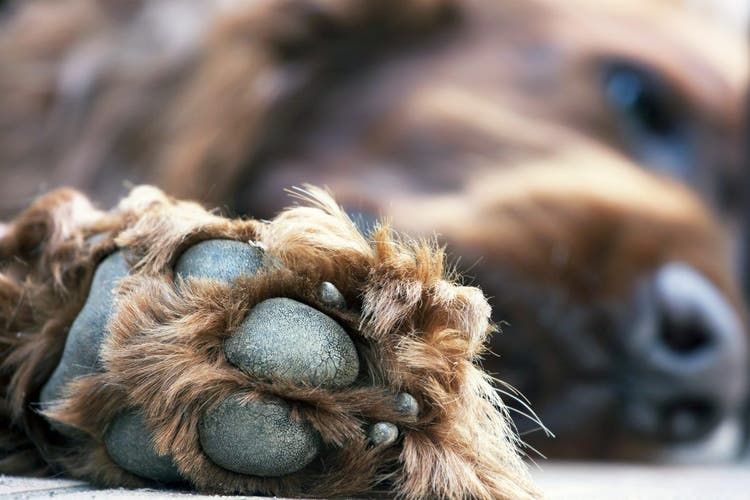
Understanding Dog Foot Pads – Are My Dogs Feet Really Protected?
How can dogs run on hot sand or in the snow without needing shoes? This is a common question because our feet are very sensitive to the touch and we have a hard time walking on rough surfaces without our feet hurting, but our dogs seem to be fine.
Think back to when you were a little kid. Did you ever wear shoes when you were playing outside? Did it ever bother you that you didn’t have shoes on? Were you even able to walk on rocks barefoot? Amazingly we could. Most kids run around barefoot and their feet become rough and tough. This is the same with dogs. Their feet are able to withstand numerous textures and temperatures. In addition, dogs have special skin on the bottoms of their feet called “paw pads” that isn’t found anywhere else on the body.
Our dog’s paws are tougher and more complex than the soles of our feet.
What Are Paw Pads?
Paw pads are cushions on the bottom of dogs feet. They are very tough, thick, and well insulated. Paw pads are made of fat, connective tissue, and the thickest skin found on the entire body. These layers enable your dog to walk on hot roads and in the cold snow easily. They also provide great cushioning. Unlike humans, your dog has its own state-of-the-art gel insert.
Dogs are made to be able to move around on all different terrains at all times of the year. We are able to buy different types of shoes to accommodate the type of exercise or walking that we are doing; dog’s paws are important because they have to effectively accommodate all types of exercise and textures with only one set of paws.
When you look closely at paw pads they appear rough, this is normal. They are rough for protective purposes. If your dog walks a lot on rough surfaces such as concrete you will see that their pads have become smooth in the places where they place the most pressure. This is part of normal wear and tear, but remember to keep an eye on these spots to make sure that they don’t become too thin and start to bleed. To help prevent this you can try walking your dog on the grass instead of the concrete sidewalk. The extra cushion provided by the ground versus the concrete beneficial for your dog’s joints long term.
A Dog’s Paw Pads Are Not Indestructible
Even though dog’s paws are tough it is important to remember that they aren’t indestructible. They can blister and be severely damaged when exposed to environmental extremes or activities that they are unaccustomed to. For example, it is common for severe injury to occur when dogs are taken running on a hot day when they aren’t used to it. The pads can blister and peel.
Take time to remember where you are playing with your dog and what is on the ground. During the winter remember to check between your dogs toes to make sure that all of the snow and ice has been removed. The area between the toes is more sensitive and not as well protected as the paw pads.
Paw pads are an amazing, versatile and highly developed part of our wonderful four-legged friends.